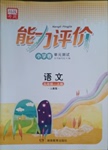题目内容
Whatever our differences as human beings are we all think we’re more like the rest of the animal world than we realize. It is said that we share 40 per cent of our genetic(遗传的)structure with the simple worm.
But that fact has helped Sir John Sulston win the 2002 Nobel Prize for Medicine. Sir John is the founder of the Sanger Institute in Cambridge, which was set up in 1992 to get further understanding of the human genome(染色体组).
To help them do this, they turned to the worm. The nematode(线虫类的)worm is one of the earliest creatures on planet earth. It is less than one millimeter long, completely transparent and spends its entire life digging holes through sand. But it still has lots to say about human life, and what can be done to make it better.
What the worm told Sir John and his colleagues was that each of the cells in the human body is programmed like a computer. They grow, develop and die according to a set of instructions that are coded in our genetic make-up.
Many of the diseases that humans suffer from happen when these instructions go wrong or are not obeyed. When the cell refuses to die but carries on growing instead, this leads to cancer. Heart attacks and diseases like AIDS cause more cell deaths than normal, increasing the damage they do to the body. Sir John was the first scientist to prove the existence of programmed cell death.
Sir John Sulston got a Nobel Prize for Medicine because he has .
A.found that human beings are similar to the worm
B.got the fact we share 40 per cent of our genetic structure with the simple worm
C.found the computer which controls each of the cells in the human body
D.proved that cell death is programmed
People might be seriously ill if the cells in their body .
A.grow without being instructed B.die regularly
C.fail to follow people’s instructions D.develop in the human body
The underlined word“they”(paragraph 5)refers to .
A.cell deaths B.diseases C.instructions D.cells
What is the subject discussed in the text?
A.The theory of programmed cell deaths. B.A great scientist—Sir John Sulston.
C.The programmed human life. D.Dangerous diseases.
【小题1】D
【小题2】A
【小题3】B
【小题4】A
解析:
【小题1】由文章最后一句可知。
【小题2】末段首句与A项表达意义一致,而C项指的是“没有遵照人的指令”。
【小题3】they do to the body是定语从句修饰the damage,they显然是指上文中的diseases。
 【小题4】若以B为题,文章需介绍他的成长过程、创业经历、工作生活等内容。
【小题4】若以B为题,文章需介绍他的成长过程、创业经历、工作生活等内容。

 能力评价系列答案
能力评价系列答案